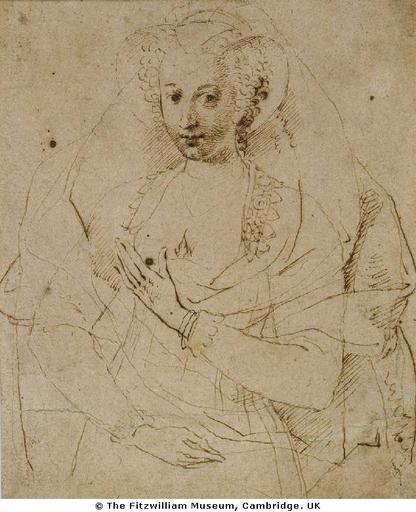MAKE A MEME
View Large Image

| View Original: | Lucy_Harington,_Countess_of_Bedford.jpg (634x780) | |||
| Download: | Original | Medium | Small | Thumb |
| Courtesy of: | www.flickr.com | More Like This | ||
| Keywords: Lucy Russell, Countess of Bedford, née Harington (1581–1627) was a major aristocratic patron of the arts and literature in the Elizabethan and Jacobean eras. Sidney Lee called her "the universal patroness of poets." She was the daughter of Sir John Harington of Exton, and Anne Kelway; well-educated for a woman in her era, she knew French, Spanish, and Italian. She was a member of the Sidney/Essex circle from birth, through her father, first cousin to Sir Robert Sidney and Mary, Countess of Pembroke; she was a close friend of Essex's sisters Penelope Rich and Dorothy Percy, Countess of Northumberland (the latter named one of her daughters Lucy after the Countess). Lucy married Edward Russell, 3rd Earl of Bedford, on December 12, 1594, when she was thirteen years old and he was twenty-two. She had a reputation as a beauty, and "for getting her own way." Lucy's husband, the Earl of Bedford, got himself into serious trouble in 1601 when he rode with the Earl of Essex in Essex's rebellion against Queen Elizabeth. The Bedford fortunes revived when the reign of James I and Anne of Denmark began in 1603; The Earl and Countess were among the first English aristocrats to go to Scotland to pay court to the new monarchs. Apart from literary matters, The Countess was a significant figure in the development of English country-house and garden design, centering on her estates at Twickenham and Moor Park. As one of the most influential women at James's court, she was also involved in a range of political issues; in the later part of the reign she was among the most prominent supporters of Elizabeth of Bohemia. Prominent as she was, both Lucy and her husband had serious financial problems throughout their lives. Lucy reportedly had debts of £50,000 in 1619, apart from the Earl's massive indebtedness. Lucy, Countess of Bedford died in the same month as her husband, May 1627. None of their children survived infancy. Lucy Russell, Countess of Bedford, née Harington (1581–1627) was a major aristocratic patron of the arts and literature in the Elizabethan and Jacobean eras. Sidney Lee called her "the universal patroness of poets." She was the daughter of Sir John Harington of Exton, and Anne Kelway; well-educated for a woman in her era, she knew French, Spanish, and Italian. She was a member of the Sidney/Essex circle from birth, through her father, first cousin to Sir Robert Sidney and Mary, Countess of Pembroke; she was a close friend of Essex's sisters Penelope Rich and Dorothy Percy, Countess of Northumberland (the latter named one of her daughters Lucy after the Countess). Lucy married Edward Russell, 3rd Earl of Bedford, on December 12, 1594, when she was thirteen years old and he was twenty-two. She had a reputation as a beauty, and "for getting her own way." Lucy's husband, the Earl of Bedford, got himself into serious trouble in 1601 when he rode with the Earl of Essex in Essex's rebellion against Queen Elizabeth. The Bedford fortunes revived when the reign of James I and Anne of Denmark began in 1603; The Earl and Countess were among the first English aristocrats to go to Scotland to pay court to the new monarchs. Apart from literary matters, The Countess was a significant figure in the development of English country-house and garden design, centering on her estates at Twickenham and Moor Park. As one of the most influential women at James's court, she was also involved in a range of political issues; in the later part of the reign she was among the most prominent supporters of Elizabeth of Bohemia. Prominent as she was, both Lucy and her husband had serious financial problems throughout their lives. Lucy reportedly had debts of £50,000 in 1619, apart from the Earl's massive indebtedness. Lucy, Countess of Bedford died in the same month as her husband, May 1627. None of their children survived infancy. | ||||